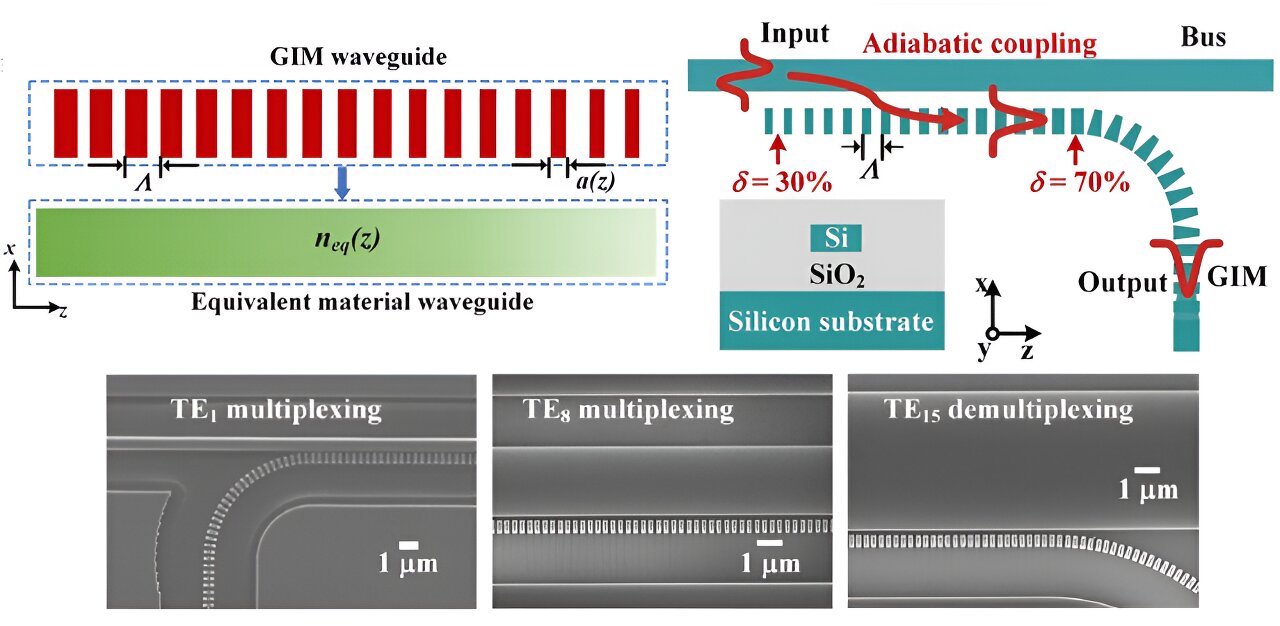The past few years have witnessed a significant increase in the volume of data transferred and processed per second. Emerging technologies like high-dimensional quantum communications, large-scale neural networks, and high-capacity networks demand large bandwidths and high data transfer speeds. One potential solution to achieve these requirements is to replace the conventional metallic wires between electronic system components with optical interconnects, utilizing light instead of electricity to establish data transfer channels.
Optical interconnections offer incredibly high speeds through a technique called mode-division multiplexing (MDM). Waveguides, precisely designed structures, enable light to propagate in specific patterns known as “modes.” Since multiple modes can propagate simultaneously without interference, they act as separate data channels, enhancing the overall data transfer rate of the system.
However, the speed of MDM systems reported thus far has been limited due to imperfections in device fabrication, resulting in refractive index variations in the waveguides. One approach to mitigate these imperfections is to engineer the refractive indices of the waveguides by optimizing their structure and composition. Unfortunately, current methods are constrained by material choices or result in large circuit footprints.
In light of these challenges, a research team led by Professor Yikai Su from Shanghai Jiao Tong University in China aimed to develop a novel approach for coupling different light modes. Their study, published in Advanced Photonics, details the successful implementation of this technique in an MDM system, achieving unprecedented data rates.
The key highlight of the research is an innovative design for a light-mode coupler, a structure capable of manipulating a specific light mode traveling in a nearby bus waveguide, such as a nanowire carrying the total multi-mode signal. The coupler can inject a desired light mode into the bus waveguide or extract one from it, redirecting it along a different path.
2023-09-16 04:24:03
Link from phys.org
